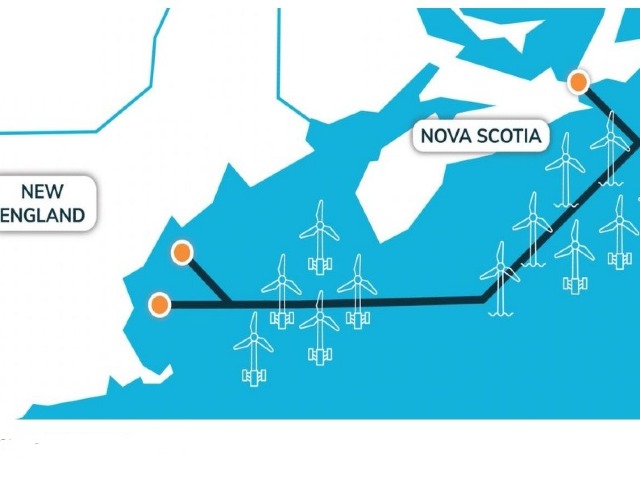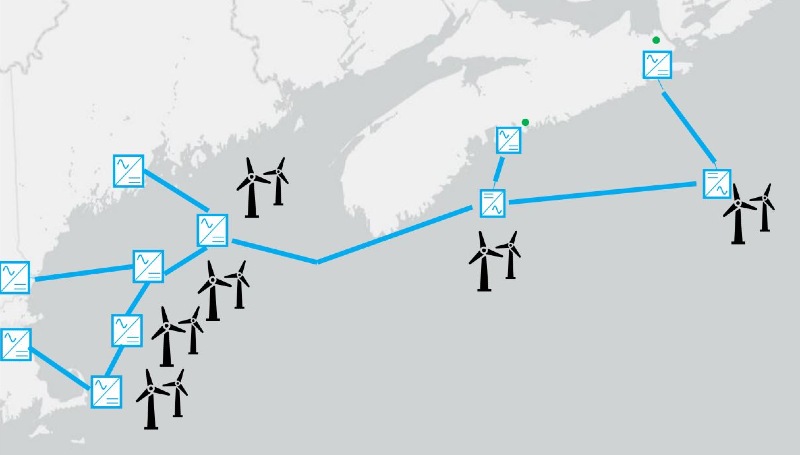
Image: Source: NEMOEC Coalition
A coalition of seven developers of offshore wind, green hydrogen, and transmission solutions has formed to explore the benefits of a US-Canadian transmission corridor.
To this end, the New England – Maritimes Offshore Energy Corridor (NEMOEC) coalition, in partnership with Power Advisory LLC and DNV, has released a white paper titled A New England – Maritimes Offshore Energy Corridor Builds Regional Resilience for a Clean Energy Future.
The paper discusses the potential benefits of a 2000MW shared transmission link between Nova Scotia and New England, Canada, connecting offshore wind in the Gulf of Maine (New England) and in Nova Scotia with load centres in the two regions via a new HVDC transmission intertie.

Illustrative Figure: the need, size and requirements of interlinks should be evaluated based on detailed onshore & offshore techno-economic analysis. Credit NEMOEC
The coalition consists of DP Energy, Total Energies SBE US, Northland Power, Hexicon, Atlantic Canada Offshore Developments, Bear Head Energy and Grid United.
The members aim to deploy modular, multi-terminal, HVDC offshore networks that are designed with future expansion in mind. According to the whitepaper, “the standardization and modularization of parameters ensure compatibility between different offshore platforms and enable interconnection of platforms to build out an offshore transmission backbone network.”
Economic and environmental benefits of a US-Canadian transmission corridor
The whitepaper highlights several benefits of the transmission project, including market integration and optimisation, reduced reliance on natural gas and the accompanying price volatility, as well as balancing benefits such as balancing cost and forecast error and reductions from the wind resource diversity due to lower variability of wind, and reduced curtailment from the use of the NEMOEC facilities to flow excess power to load centers.
The study further emphasised the environmental benefits of the project, such as lower emissions, and reduced disruption to marine life and local communities.
Economic and environmental benefits for a 2,000MW transmission line are estimated to be between US$620 and $780 million per year, according to whitepaper calculations.
Next steps
The whitepaper will act as a basis for interactions with policymakers to aid policy amendments and changes to the regulatory framework to facilitate the development of the US-Canadian transmission corridor.
The coalition is in the process of engaging with stakeholders, as well as identifying areas where further research and study are required.
Also, potential market barriers and opportunities are being identified, such as the availability of offtakers and long-term funding.
The complexities and ambiguities of US and Canadian permitting procedures must also be ironed out.